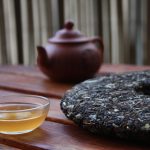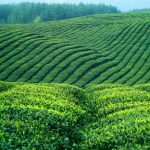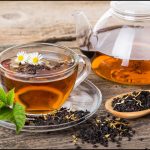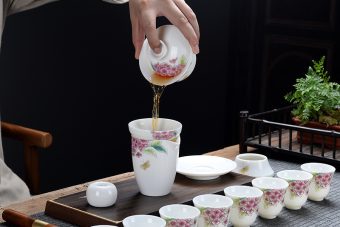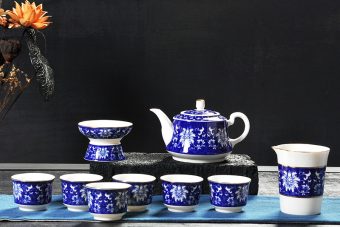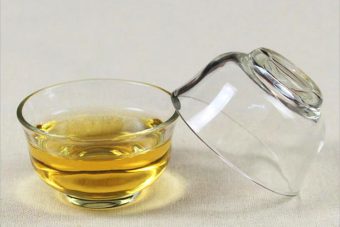I. Abuout Gongfu tea sets A. Brief history of Gongfu tea sets The artistry of…

by vinux
- November 21, 2023
- 238
- 0
I. The Evolution of Tea Sets
A. The origin and history of tea sets
Tea sets originated in China during the Han Dynasty between 206 BC to 220 AD, marking the inception of tea drinking. The introduction of tea as a beverage brought about the innovation of suitable paraphernalia for its consumption. The most acknowledged history of tea sets dates back to the late Ming Dynasty (1368–1644), featuring a southern light blue porcelain that exudes an allure of exquisite craftsmanship.
B. The transition from the traditional Chinese tea set to the modern ones
Over the years, tea sets have transitioned from traditional Chinese tea sets to more modern renditions, each evolution preserving the essence of tea drinking while adding its unique flair. Traditionally, Chinese tea sets were simplistic comprising teapots and cups. They were mainly designed with practicality and functionality in mind. With modern influences, aesthetic considerations now drive the design of tea sets. Modern tea sets incorporate innovations in style and materials without sacrificing functionality.
C. The popularity of tea sets across cultures
Tea sets are a staple in cultures worldwide, transcending geographical and cultural boundaries. From the intricately designed tea sets of ancient China to the silver and porcelain sets of Europe, they bear cultural significance and exhibit unique regional aesthetics. Today, these tea sets are not only cherished for their utility but also their artistic value, making them a beverage apparatus loved globally. They have evolved to become works of art, with some of the most artistic ones rising in popularity across different cultures.
II. The Aesthetics and Artistic Value of Tea Sets
A. The Artistic Charm of Tea Sets
Tea sets, often viewed as simple home utensils, inherently transcend beyond to symbolize beauty and present a neat blend of form and function. The intricate designs and hand-painted motifs, often meticulously etched on each piece, infuse a sense of charm that is exclusive to its owner. Each tea set may narrate a story of its provenance or portray a specific era’s style, making them true works of art.
B. The Role of Tea Sets in Home Decor
Embodied with a unique mixture of utility and decoration, tea sets play a considerable role in home decor. Their aesthetic versatility ranges from adding a vintage touch with a classic Victorian tea set to a more contemporary artistic vibe with a minimalist, modern tea set design. A tea set displayed on a shelf or a coffee table can instantly enhance the decor, adding a refined touch to the home environment.
C. How Every Part of a Tea Set Contributes to its Overall Beauty
A tea set is an ensemble comprising several individual elements—like the teapot, teacups, sugar bowl, creamer, and sometimes, a tray—all contributing to its overall beauty. For instance, the teapot’s grandeur, typically the largest part, establishes the central theme. Its design complimented by the smaller, delicate teacups hints at the uniformity of design. The additional elements like the sugar bowl and the creamer embody the elegant flair of hospitality, making the tea-drinking process a ceremonious experience. Together, all these elements showcase an artistic cohesion, enhancing the overall beauty of the tea set.
III. The Importance of a Complete Tea Set vs Just Cups
Tea drinking is more than just a means to quenching thirst, it’s a tradition steeped in history and culture. The importance of owning a complete tea set compared to only having tea cups can significantly enhance this experience.
A. The Components of a Complete Tea Set and Their Uses
A complete tea set is typically composed of a teapot, tea cups, a creamer, a sugar bowl, and sometimes a tray for serving. Each item within the set has a specific role. The teapot acts as the main vessel for brewing and serving tea. The tea cups are where the prepared tea is poured and enjoyed. The creamer and sugar bowl hold optional sweeteners or additives that can be added to the tea, as per individual preference. The serving tray, where present, helps in the transportation and presentation of these items.
B. The Comparative Value of Tea Sets Versus Just Tea Cups
While tea cups alone are central to the tea drinking experience, a complete tea set enriches the process by adding functionality, aesthetic appeal, and a sense of ceremony. Just by being, they introduce an additional layer of sophistication to tea drinking. They are also often more artistically designed, showing off the craftsmanship of their makers and potentially enhancing the decor of a home.
C. How Tea Sets Enhance The Tea Drinking Experience
Tea sets aren’t merely decorative objects; they play a significant part in enhancing the overall tea drinking experience. More than just cups, a tea set brings a kind of formality to the occasion, making the ritual more layered and engrossing. The serving pot allows for an even distribution of flavors among all cups, ensuring each participant shares the same tasting experience. This convergence — of taste, aesthetics, and shared tradition — works in harmony to turn a simple drink into an immersive cultural experience.
In conclusion, complete tea sets provide both practicality and beauty, elevating not just tea drinking but also social interaction, cultural expression, and individual enjoyment.
IV. The Types of Tea Sets
Tea sets come in a variety of shapes, sizes, and most importantly, materials. Each material lends its unique characteristics to the tea set’s aesthetic appeal, functionality, and the overall tea drinking experience.
A. Classification of tea sets based on material (porcelain, glass, etc.)
There are mainly four types of materials commonly used in crafting tea sets: porcelain, bone china, glass, and clay. Porcelain, known for its beautiful and often intricate designs, is perhaps the most popular of all. Bone china, more robust yet lighter than porcelain, often has a somewhat translucent appearance. Glass tea sets are perfect for those who enjoy admiring the color of their tea while clay, especially purple clay or Yixing clay, is praised for its ability to enhance the flavor of the tea.
B. Explaining the unique characteristics of southern light blue porcelain tea sets
Southern light blue porcelain, often known as qingbai ware, was a type of porcelain produced in Jiangxi province during the Song Dynasty in China. This particular porcelain gets its famous light bluish tint from the use of a glaze containing small amounts of iron. The delicately crafted pieces of this porcelain tea set were thin, with a slightly translucent quality, and the surface was often incised or carved with designs. This subtle, elegant kind of porcelain tea set is a true testament to the mastery and skill of ancient Chinese craftspeople.
C. Different styles of tea sets and their impact on aesthetic appeal
Tea sets come in a variety of styles, from the intricately adorned Victorian tea sets with their ornate motifs and rich colors, to the minimalistic and sleek Japanese tea sets that embody Zen aesthetics, and the traditional Chinese tea sets featuring exquisite calligraphy. Each style carries a unique aesthetic appeal and a cultural history that significantly contribute to the artistry and allure of tea-drinking. Whether for everyday use or special occasions, there’s a tea set style that can suit anyone’s preference and enhance their tea-drinking experience.
V. A Guide to Buying the Right Tea Set
The delightful art of tea drinking is greatly elevated by the right tea set. Let’s delve into some nuances to consider when choosing your perfect tea set.
A. Factors to consider when buying a tea set
There are several key factors to consider. Firstly, the material is paramount. Some tea connoisseurs prefer porcelain for its delicate finish and ability to retain heat, while others opt for glass or tin sets to appreciate the color of the tea. Secondly, the design and aesthetic appeal. Think about whether you want a modern, minimalist set or a vintage, ornate style. This largely depends on your personal taste and the style of your existing décor. Thirdly, size also matters. Do consider the capacity of the teapot and cups and whether they suit your needs.
B. The importance of quality in choosing a tea set
In addition to design and material, quality is another major determinant. The superiority or otherwise of a tea set greatly impacts not just the presentation of tea, but also the taste. High-quality porcelain tea sets are thermal resistant and can make the tea taste more mellow, for instance. Furthermore, a well-made tea set will stand the test of time, with its colors remaining vibrant and its pieces remaining chip-free.
C. Tips for first-time tea set buyers
If you’re buying a tea set for the first time, it can be quite overwhelming. Start by setting a budget. Next, research about different types and qualities of tea sets to make an informed decision. It is crucial to note that the finest tea sets are often handcrafted – a detail that can add significantly to the cost. You may choose to splurge on an heirloom-quality set or start with a more budget-friendly option. Last, but arguably most importantly, select a tea set that you genuinely love. After all, a beautiful tea set can transform the simple act of drinking tea into a luxurious experience.
VI. The Impact of Tea Sets on Tea Drinking Traditions
Just as the culinary world has its utensils, the beverage industry, most notably the tea drinking sector, are graced with tea sets. Their existence, dating back to thousands of years and originating from China, has been pivotal in how tea has been appreciated as more than just a beverage. The presentation of tea in exquisite tea sets has become symbolic of the art, history, and culture of tea drinking traditions.
A. How Tea Sets Contribute to the Appreciation of Tea Drinking Traditions
Tea sets play a significant role in the celebration of tea drinking traditions. Each of the tea set pieces, from the teapot to the sugar pots, milk jugs, and most importantly, the tea cups, adds a layer of refinement and sophistication to the tea ritual. According to the Ellementry blog, the inclusion of a tea pot in the set, which serves as the brewing station, allows the tea to release its full flavor before it’s served in cups. Also, the provision for sugar and milk containers within the set implies the customisation of tea to individual taste, thereby promoting the universal love for this beverage.
B. Role of Tea Sets in Traditional Tea Ceremonies in Different Cultures
The traditional tea ceremonies held in different cultures are partly defined by the ‘equipment’ used. For instance, in a Chinese tea ceremony, a complete tea set usually include a tea tray, Penoy bowl, tea scoop, tea funnel, tea needles and tea cups. These additional items included in the tea set showcases not just a service set, but also a cultural immersion. Meanwhile, in the British culture, where tea has been a ‘national drink’ for centuries, the ornate and picturesque designs on the porcelain tea sets, according to Wedgwood, have become emblematic of Britain’s royal history and aristocracy. Hence, the tea sets were, and still are, a means of ‘serving’ culture in a cup.
C. How Tea Sets Brighten Up the Table and Elevate Social Gatherings
Part and parcel of the tea culture is its ability for bridging social gaps and creating bonding moments among people. Tea sets, with their ornate designs and artistic charm, add the ‘visual appeal’ to the table. As stated in Thes Traditions, the colourful decorations, shape designs, and material glow, have a positive impact on the table, making it look livelier, thus elevating the social ambience. The simple act of pouring tea from a beautifully crafted tea pot, watching the drink swirl in an artistically designed cup, contributes to light-hearted discussions and shared smiles, bringing the table ‘alive’.

